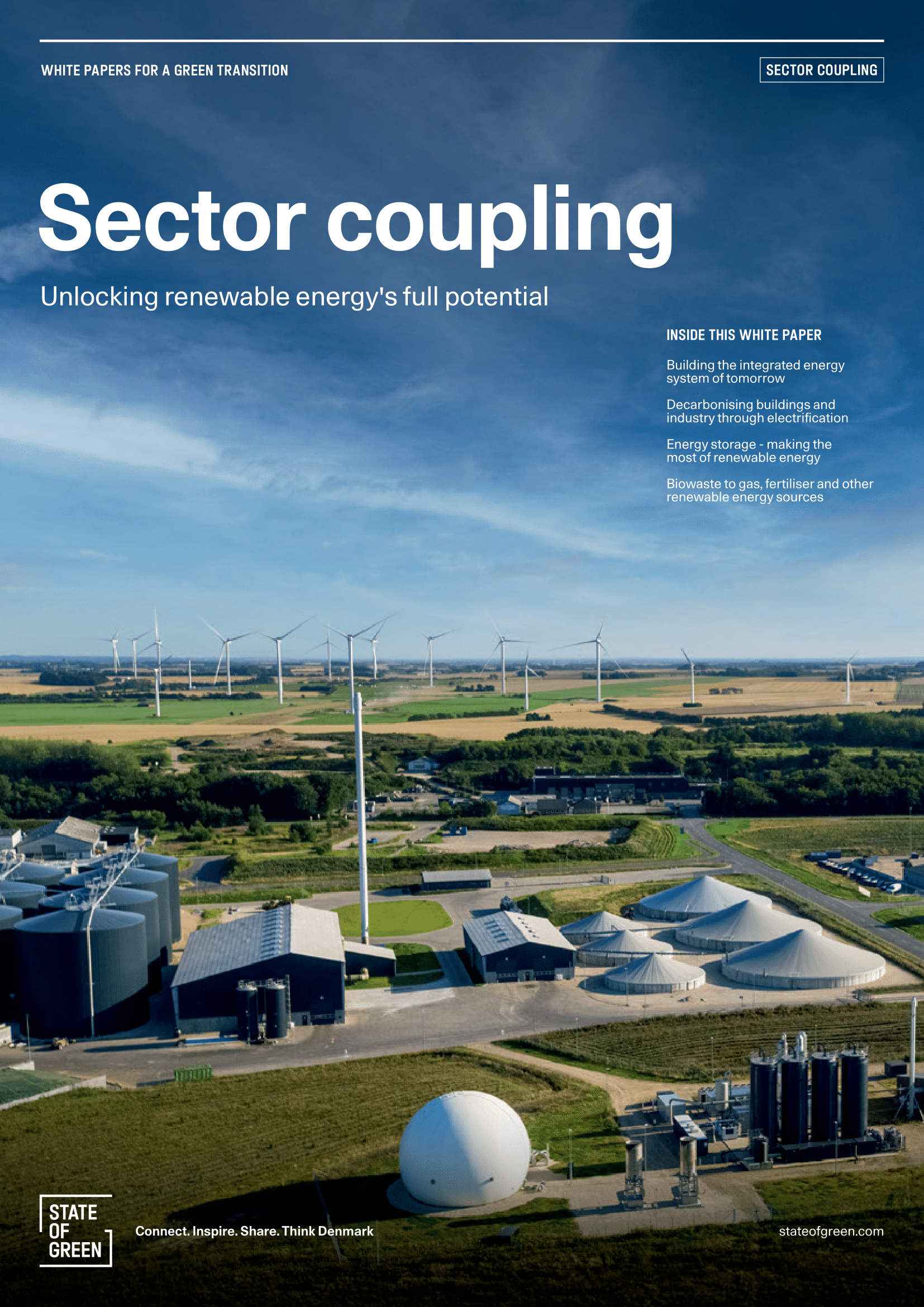
Want to learn more?
Maja Schrøder Kristensen
Senior Project Manager (Renewable Energy Sources and Sector Coupling)
Publication
Sector coupling


Maja Schrøder Kristensen
Senior Project Manager (Renewable Energy Sources and Sector Coupling)
Sector coupling offers a transformative approach to harnessing the full potential of renewable energy and energy efficiency, driving decarbonisation and achieving climate goals. By integrating energy systems across sectors, sector coupling unlocks unprecedented efficiency and resilience, paving the way for a low-carbon, resource-efficient future.
Sector coupling integrates various energy sectors, such as electricity, heating, cooling, gas, and Power-to-X technologies, to maximise the use of renewable energy. This approach enables a flexible transition from fossil fuels, enhancing energy efficiency, security, and resilience while driving decarbonisation efforts. Electrification is central to sector coupling, with technologies like electric vehicles and heat pumps reducing emissions and helping to balance the grid. For sectors that are difficult to electrify, Power-to-X converts renewable electricity into fuels like hydrogen, supporting industries such as transport and farming.
Denmark is leading in sector coupling, utilising its renewable energy resources and collaboration between government, industry, and academia. Key initiatives include smart grids, large-scale energy storage, and green hydrogen production. Digitalisation also plays a crucial role in optimising energy flows and improving system efficiency. Sector coupling represents a shift in energy management, fostering sustainability and inspiring global efforts towards a low-carbon future.
With this publication, we aim to inspire and help unlock the full potential of renewable energy sources worldwide.

Discover the hidden potential of sector coupling in this white paper, offering valuable insights and practical solutions that can inspire and guide global efforts towards a green and sustainable transition.